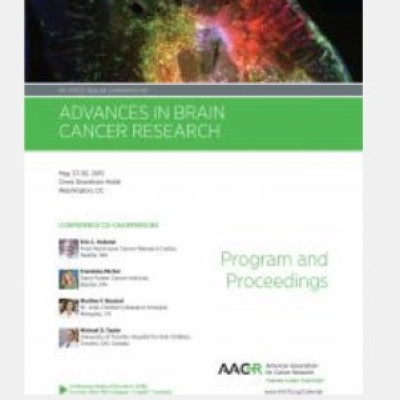Publication
An in vitro model for glioblastoma using microfluidics: Generating pseudopalisades on a chip
J.M. Ayuso, R. Monge, A. Martínez-González, G.A. Llamazares, J. Berganzo, A. Hernández-Lain, J. Santolaria, M. Doblaré, P. Sánchez-Gómez, V.M. Pérez-García, I. Ochoa, L.J. Fernández
Cancer Research 75, B04 (2015)
MOLAB authors
Abstract
Glioblastoma (GBM), also named grade IV astrocytoma, is the most common and lethal malignant primary brain tumor. GBM is characterized by two main histopathological conditions: necrotic foci typically surrounded by areas of high cellularity and microvascular proliferation.
The causes of such densely populated regions, known a “pseudopalisades”, remain poorly understood. Firstly, high cellularity was thought to be due to the rapid proliferation of GBM cells, however recent histological studies have shown that proliferation in pseudopalisading areas is significantly lower than in adjacent regions. Additionally, in pseudopalisades, apoptosis is substantially larger than in neighboring regions. These evidences suggest that pseudopalisades are due to other causes than simply higher proliferation or survival rates. Recent reports have pointed out that, in histological slices from GBM patients, more than 50% of pseudopalisades present clearly a central obstructed blood vessel and in more than 90% microscopic evidences of thrombosis are observed.
As a consequence, oxygen and nutrients supply is compromised around the surrounding zones. It has been proposed that one of the driven forces of glioma aggressiveness is these nutrient and oxygen starvation. According to this hypothesis, GBM cell proliferation and secretion of pro-coagulant signals would cause thrombotic events, leading to hypoxia and nutrient depletion in the microenvironment. As a consequence, cells migrate towards nutrients and oxygen enriched regions, creating the characteristic GBM pseudopalisades. Eventually, these migrating cells would reach other blood vessels and eventually cause the collapse of these vessels, restarting the process and creating an expansive wave of tumor cells across the brain.
This complex process is hardly reproducible using “in vitro” models because the conventional migration assays are unable to mimic the complex microenvironment described. Recently, microfabrication and microfluidic technologies have arisen as interesting alternatives for creating high-performance cell culture systems. In this paper we describe the design, fabrication and biological validation of a microfluidic device using SU-8 technology for three-dimensional GBM cell cultures under thrombotic conditions. The fabricated microdevice possesses a central microchamber to locate the cells embedded within a hydrogel, mimicking the ECM and allowing migration in three dimensions. On both sides of the microchamber, two lateral microchannels are filled with culture medium, allowing nutrient and oxygen diffusion towards the microchamber, mimicking the brain blood vessels.
In this study we have demonstrated the GBM cells (U-251-MG) viability within the microdevice. Moreover, controlling medium flow through lateral microchannels we can mimic the GBM-associated thrombotic pathophysiological conditions. Under these thrombotic circumstances nutrient starvation leads to a chemotactic process and the formation of a migratory front similar to the pseudopalisades observed in vivo and validated with mathematical algorithms. Moreover, our results suggest that the whole process stimulates a more aggressive behavior of GBM cells. In an early stage when nutrients are plenty, GBM cells remain in a non-invasive phenotype. When nutrients are depleted, GBM cells initiate a migration process towards enriched regions, leading to the pseudopalisade formation. When compared with patient´s tumor pathology images, GBM cell invasion behavior follow the same pattern observed in vivo. This novel technique could help us to understand the mechanism of the pseudopalisade formation and to suggest novel therapeutic targets to avoid tumor progression. Besides, these microfluidic devices could represent an extremely useful platform to test new anticancer agents in a preclinical setting that mimics the complex GBM microenvironment.















